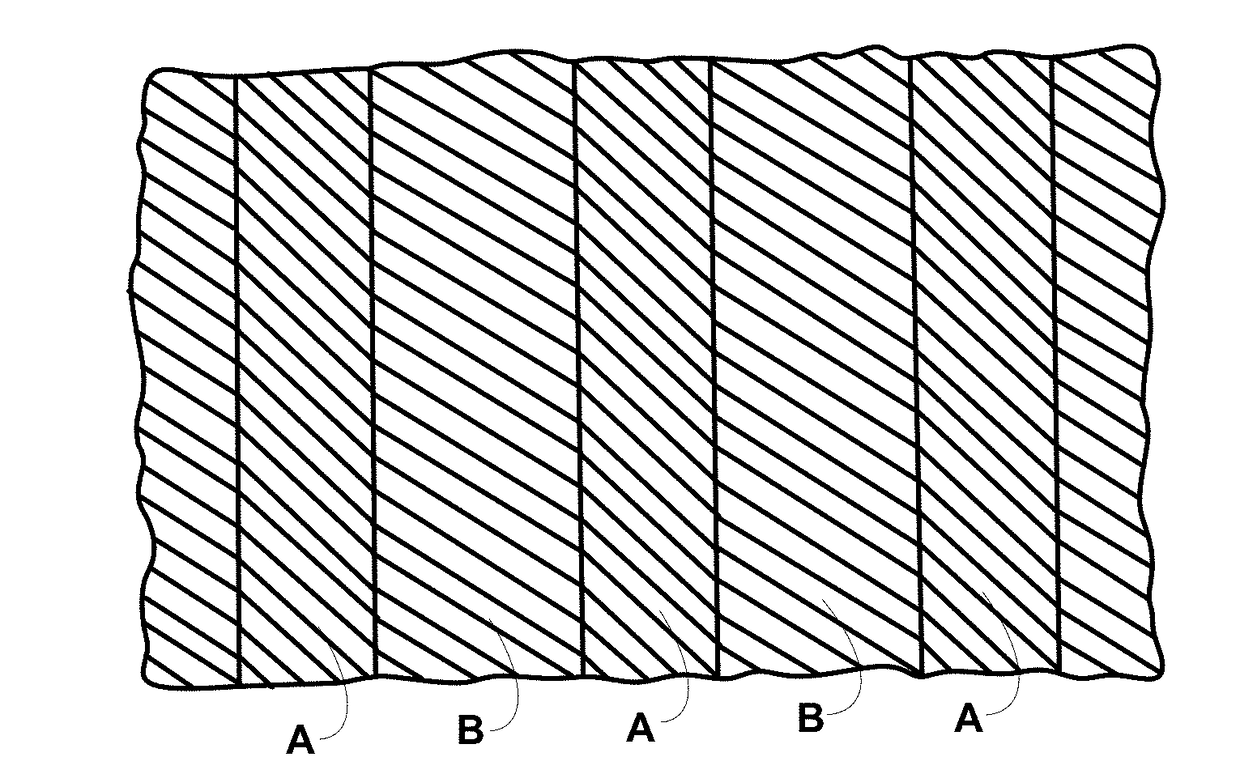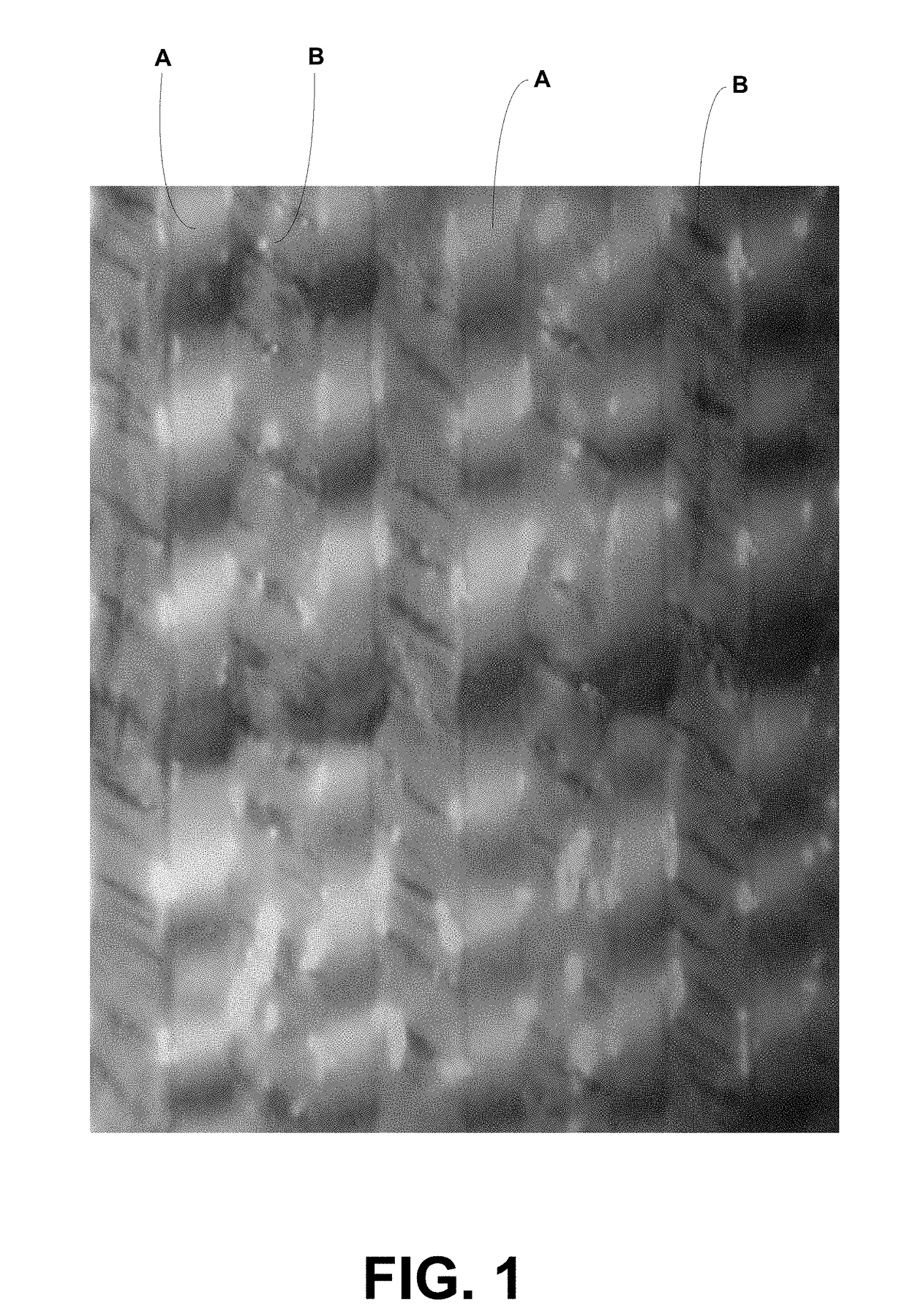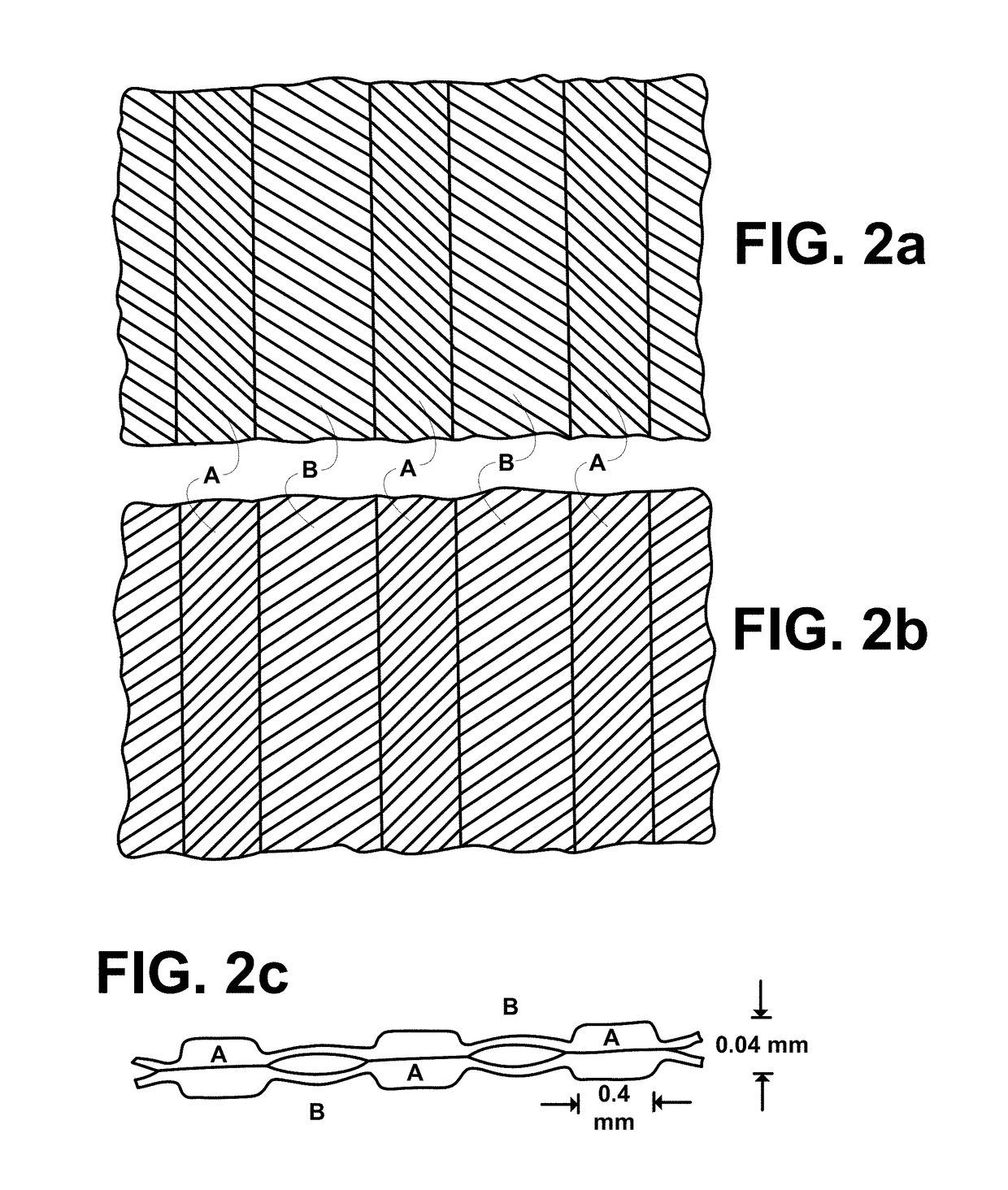Methods for making a bag from a film material exhibiting textile properties
- Summary
- Abstract
- Description
- Claims
- Application Information
AI Technical Summary
Benefits of technology
Problems solved by technology
Method used
Image
Examples
example 1
[0107]A tubular film of average gauge 18.6 micron (measured as 17.9 g / m2) is coextruded having the following composition:[0108]Middle layer, 65% of total: all HMWHDPE except for additives and white masterbatch.[0109]Outer surface layer, 15% of total: 70% LLDPE of m.f.i.=1.0+30% metalocene PE melting between 50-60° C.[0110]Inner surface layer, 100% LLDPE
[0111]The blow up ratio is 2.7:1 and the gap of the circular die orifice is 1.0 mm. This means that the tubular film, while getting its thickness reduced by a factor of about 50, gets a strong predominantly longitudinal melt orientation.
[0112]This tubular film is helically cut to form a web with 45° orientation. Two such webs are assembled on a 40° C. warm roller with their directions of orientation crossing each other. In line herewith the assembly is transversely stretched between the grooved rollers shown in FIG. 3. The roller temperature is maintained at 20° C. by means of circulating water. The width of each flat crest is 0.4 mm ...
example 2
[0118]There is used the same extruded film, the same helical cutting under 45°, and the same crosslamination and transverse stretching I laminating process as in Example 1, but before helical cutting the lay-flat tubular film is m.d. stretched in sequential manner between grooved rollers which have teeth extending parallel to the axis. The crests of these teeth are semicircular with diameter 1.9 mm, and the pitch of the grooves on each roller is 5.0 mm. By the applied inlet and outlet tension in the film and the intermeshing between the rollers the average stretching ratio is adapted to be 1.4:1. The stretching takes place on the rounded teeth on one of the grooved rollers and between the teeth, while film on the teeth of the other roller remains unstretched.
[0119]The testing of the produced crosslaminate is recorded below.
Comparative Testing of Example 1 and Example 2 Film.
[0120]The two crosslaminates and the extruded tubular film are tensile tested and tested for puncture strength...
example 3
[0132]There is used the same extruded films as in Example 1, and the same sequential m.d. stretching as in Example 2. Helical cutting is carried out under 30° to the original m.d. The film with 30° orientation is transversely stretched / embossed, in part as a single film, and in part cross webbed with itself between sharp-edged grooved rollers. The grooved rollers and the grooved roller process deviate from what is described in Example 1 only on the following points:[0133]1) The grooves are made slightly deeper to allow a deeper intermeshing, and this is set at 1.2 mm.[0134]2) One of the two grooved rollers with sharp-edged crests has a waved surface, exactly as shown in FIG. 9a. The intermeshing by 1.2 mm refers to the top sections of the waving.[0135]3) The process is carried out at ambient temperature 25° C.
[0136]The produced single ply has gauge 9.5 g / m2, and the produced crosslaminate is 19 g / m2. A microphoto of the single ply film is shown as FIG. 12. The structure of the two p...
PUM
| Property | Measurement | Unit |
|---|---|---|
| Angle | aaaaa | aaaaa |
| Length | aaaaa | aaaaa |
| Length | aaaaa | aaaaa |
Abstract
Description
Claims
Application Information
 Login to View More
Login to View More - R&D
- Intellectual Property
- Life Sciences
- Materials
- Tech Scout
- Unparalleled Data Quality
- Higher Quality Content
- 60% Fewer Hallucinations
Browse by: Latest US Patents, China's latest patents, Technical Efficacy Thesaurus, Application Domain, Technology Topic, Popular Technical Reports.
© 2025 PatSnap. All rights reserved.Legal|Privacy policy|Modern Slavery Act Transparency Statement|Sitemap|About US| Contact US: help@patsnap.com



